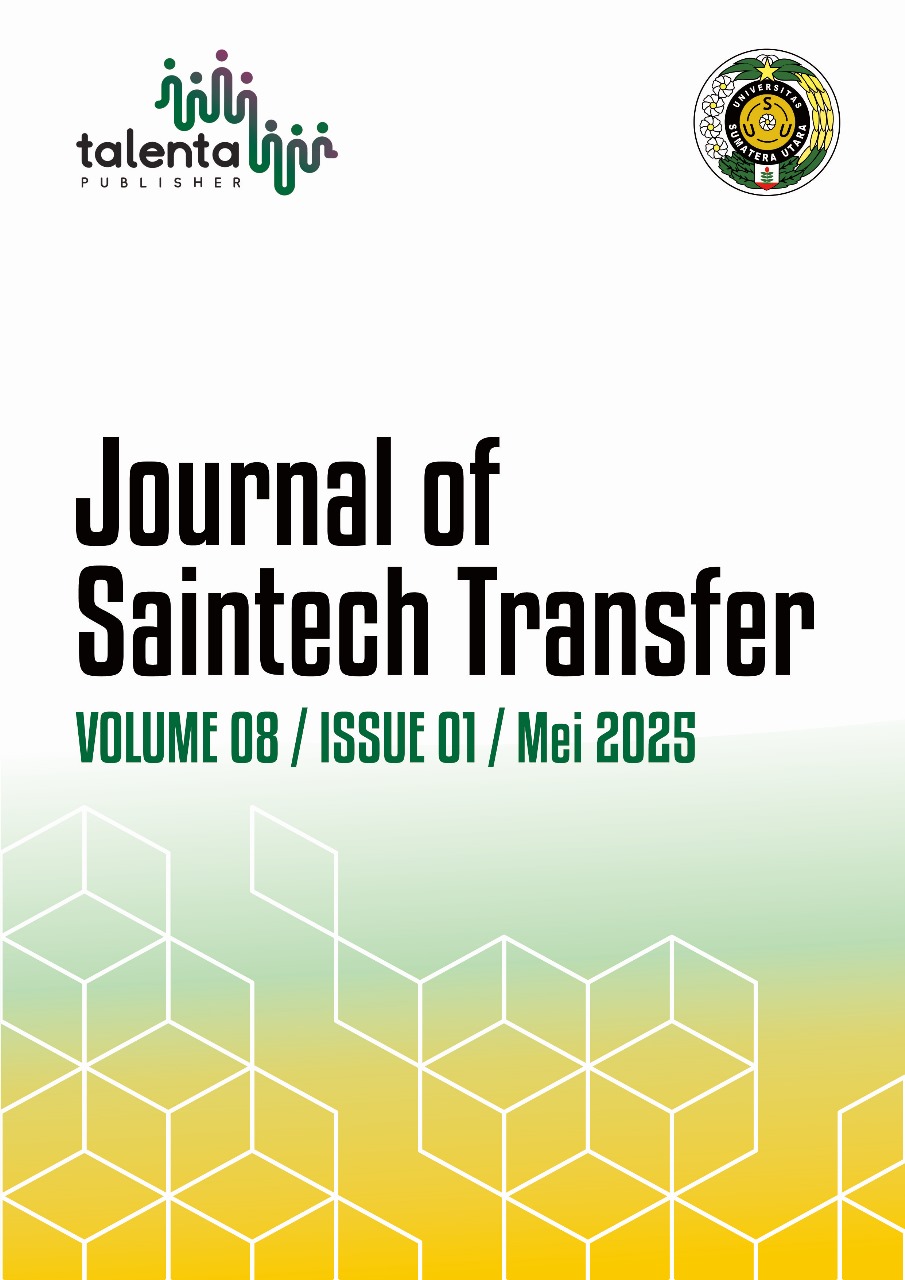Prevention education, neuropathy screening and foot vasculopathy screening in patients with type 2 diabetes mellitus at Medan Area community health centre
DOI:
https://doi.org/10.32734/jst.v8i1.19785Keywords:
diabetes mellitus, education, neuropathy screening, vasculopathy screeningAbstract
Screening of diabetic foot neuropathy and vasculopathy using monofilament and Ankle-Brachial Index (ABI) devices is a crucial step in the early detection of potential complications in diabetic patients. These screening tools are simple yet effective methods to assess sensory loss and peripheral arterial disease, which are major risk factors for the development of diabetic foot ulcers. Early identification allows for timely interventions that can significantly reduce the risk of severe complications such as infections, gangrene, and lower limb amputations. In addition to regular screening, prevention strategies should be implemented consistently. These include maintaining good glycemic control through routine blood sugar monitoring, adhering to a balanced and regulated diet, and engaging in regular physical activity. One recommended form of exercise is diabetic foot exercise, which helps improve blood circulation in the lower limbs and enhances nerve function, thereby reducing the risk of foot-related complications. Comprehensive foot care education, combined with these preventive measures, plays a vital role in improving the quality of life of individuals with diabetes and minimizing the burden of diabetic foot disease on both patients and the healthcare system.
Downloads
References
F. Hua. “New insights into diabetes mellitus and its complications: a narrative review,” Annals of translational medicine, vol. 8, no. 24, p. 1689. 2020.
G.K. Pot, M.C. Battjes-Fries, O.N. Patijn, N.van der Zijl, H. Pijl, P. Voshol. “Lifestyle medicine for type 2 diabetes: practice-based evidence for long-term efficacy of a multicomponent lifestyle intervention (Reverse Diabetes2 Now),” BMJ nutrition, prevention & health, vol. 3, no. 2, p. 188, 2020.
M. Uusitupa, T.A. Khan, E. Viguiliouk, H. Kahleova, A.A. Rivellese, K. Hermansen, A. Pfeiffer, A. Thanopoulou, J. -Salvadó, U. Schwab, J.L. Sievenpiper. “Prevention of type 2 diabetes by lifestyle changes: a systematic review and meta-analysis,” Nutrients, vol. 11, no. 11, p. 2611. 2019.
R. Tanaka, T. Shibayama, K. Sugimoto, K. Hidaka. “Diabetes self-management education and support for adults with newly diagnosed type 2 diabetes mellitus: A systematic review and meta-analysis of randomized controlled trials,” Diabetes Research and Clinical Practice.vol. 169, p. 108480. 2020.
Rusdiana, M. Savira, R. Amelia, The effect of diabetes self-management education on Hba1c level and fasting blood sugar in type 2 diabetes mellitus patients in primary health care in Binjai City of North Sumatera, Indonesia,” Open Access Macedonian Journal of Medical Sciences, vol. 6, no. 4, pp. 715–718. 2018.
A.J. Boulton, D.G. Armstrong, M.J. Hardman, M. Malone, J.M. Embil, C.E. Attinger, R.S. Kirsner. “Diagnosis and Management Of Diabetic Foot Infections,”American Diabetes Association, 2020. [Online]. Available: https://watermark.silverchair.com/toc.pdf.
Rusdiana. “Education of prevention and treatment in diabete mellitus feet,” Journal of Saintech Transfer, vol. 3, no.1, pp. 12-20. 2020.
S. Singh, S. Jajoo, S. Shukla, S. Acharya. “Educating patients of diabetes mellitus for diabetic foot carem,” Journal of family medicine and primary care. vol. 9, no. 1, pp. 367–373. 2020.
Downloads
Published
How to Cite
Issue
Section
License
Copyright (c) 2025 Journal of Saintech Transfer

This work is licensed under a Creative Commons Attribution-ShareAlike 4.0 International License.












